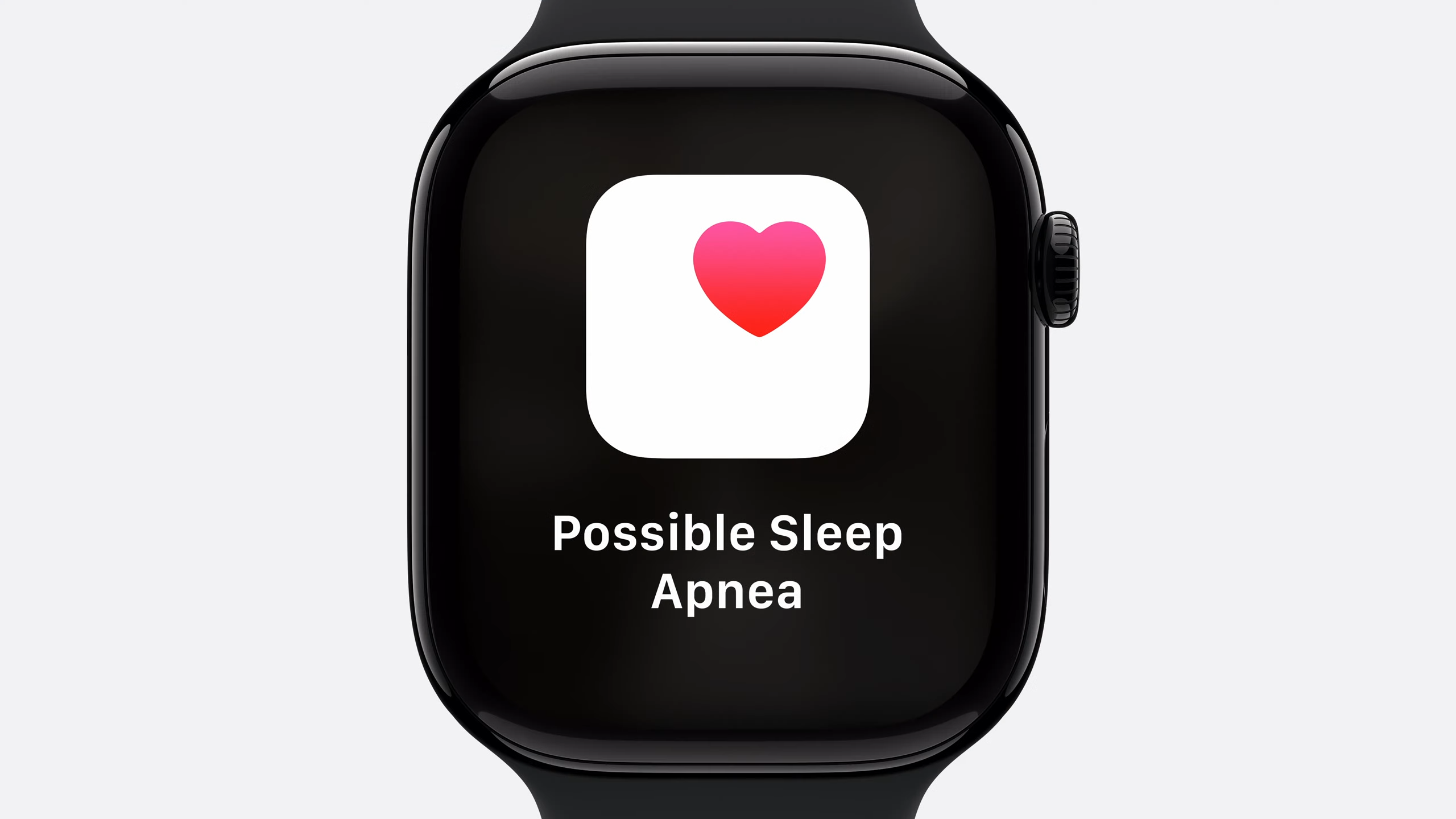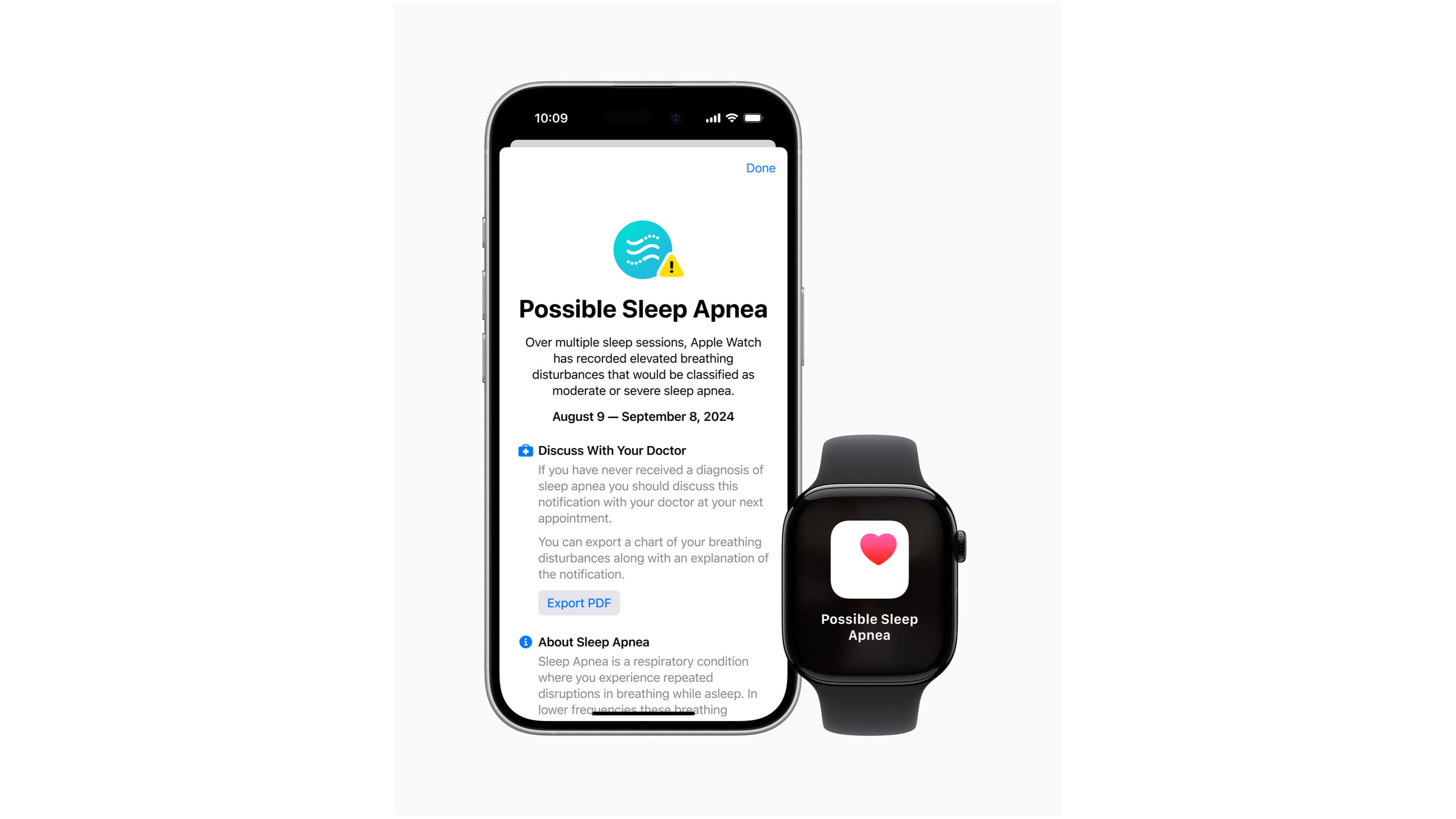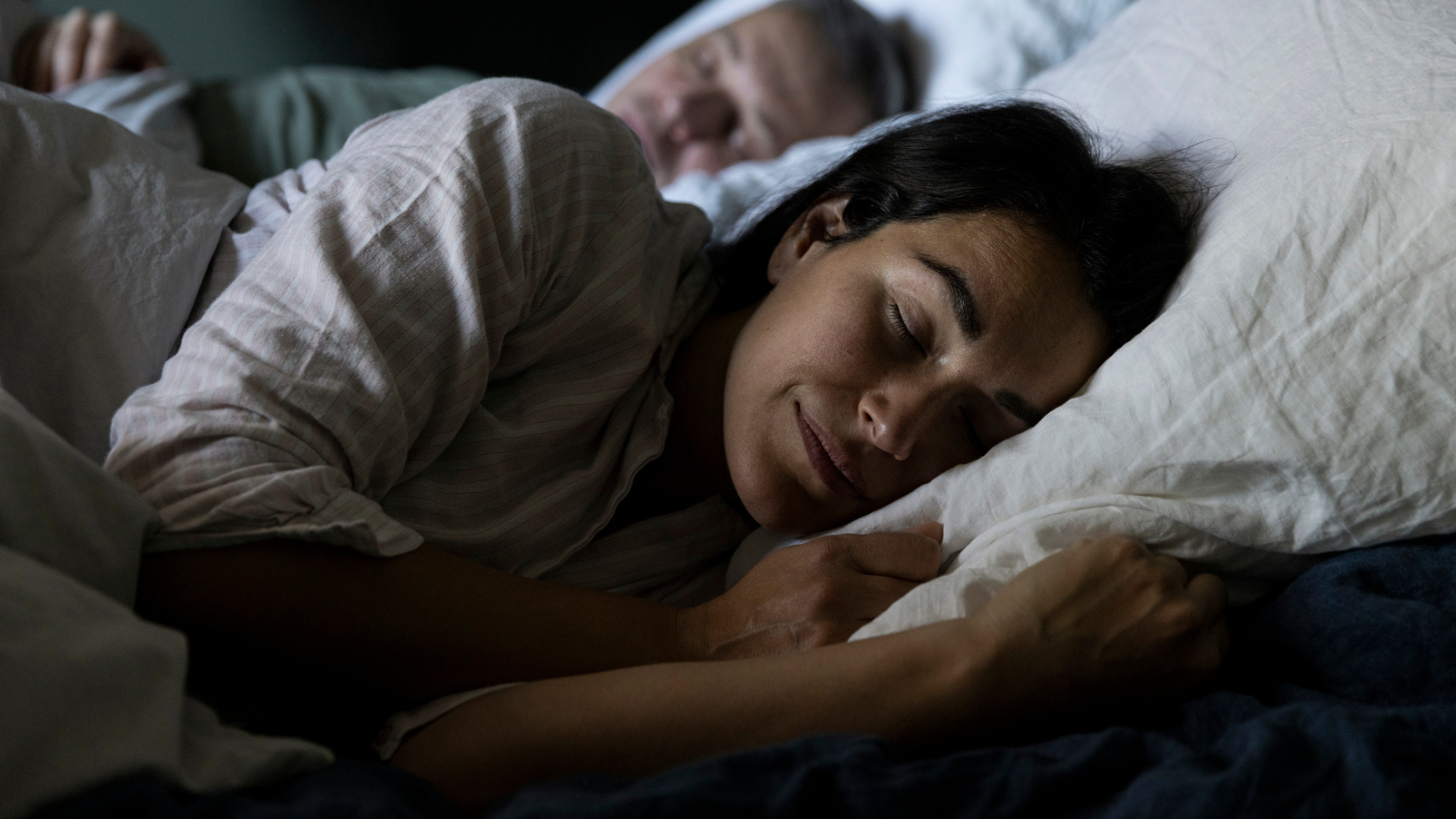Apple Watch 10 to feature sleep apnea detection — but it won't be available at launch
You'll have to wait until the FDA says yes

Apple just announced the Apple Watch 10 at its September Glowtime event. It'll have all the performance upgrades you'd expect, alongside a new S10 chip, but the most exciting new feature is sleep apnea detection.
This was widely rumoured before event, and was one of the rare Apple Watch predictions to actually hold up this year. But there's a catch. Apple hasn't actually got FDA authorization for the health-tracking feature, so it won't be available at launch.
This might sound risky, but given that it's one of the major features announced for the newly upgraded Watch, it's fair to assume that the company is fairly confident that they will get approval for the new tool.
Sleep apnea is a common but potentially serious condition where you briefly stop breathing while asleep, but, as you're asleep, it can be hard to tell that you're affected by it, which is why these detection features are so useful.
During the event, Apple repeatedly referenced the sleep apnea detection, but from the subsequent Newsroom posts about the launch, it seems that sleep apnea notifications will actually be a subset of Breathing Disturbances.
So while the company may not have the necessary regularly authorizations just yet for sleep apnea, it can let you know about your nightly breathing disturbances in the Health app on your phone.
These can be influenced by alcohol, medications, and sleep position and the Watch will use these to assess the overall restfulness of your sleep. The disturbances will be classified as elevated or not elevated, although you won't be able to see in-depth nightly data, just one-month, six-month, or one-year trends.
Get instant access to breaking news, the hottest reviews, great deals and helpful tips.

However, if sleep apnea detection is an important factor for you when upgrading, it might be best to wait it out for a few months. Apple said that the functionality will be enabled via a software update after the FDA authorization goes through.
This is actually an unusual case where Apple is playing catch up with other brands. The Oura Ring has had sleep apnea detection for some time, while the Samsung Galaxy Watch 7 also can (although you need a Galaxy phone for this).
But where Apple has launched the Watch 10 without FDA clearance and just a promise that the feature will come soon, Samsung had authorization before it announced its latest smartwatches earlier in the year.
When (if) the FDA grants authorization, the sleep apnea detection will be coming to the Apple Watch 10, Series 9 and Watch Ultra 2.
Even though Apple might not have cleared the regulatory hurdles for sleep apnea just yet, the Watch 10 will come with watchOS 11 installed, which bundles a bunch of new and useful health and fitness tracking functions.
There's improved pregnancy tracking, a new Vitals app for monitoring your... vital health metrics, and a Training Load score so you can see when you need to recover. Oh, and you'll (finally) be able to pause your Activity Rings and take a day off.
More from Tom's Guide

James is Tom's Guide's Buying Guide Editor, overseeing the site's buying advice. He was previously Fitness Editor, covering strength training workouts, cardio exercise, and accessible ways to improve your health and wellbeing.
His first job at as a sales assistant in a department store, and this is where James learned how important it is to help people make purchasing decisions that are right for their needs, whether that's a fountain pen to give as a gift or a new fridge for their kitchen.
James is an advocate for sustainability and reparability, and focuses his reviews and advice through that lens to offer objective insights as to whether a specific product or service will be right for your needs.
